If you are considering qualifying for a mortgage to purchase a house this year, understanding the minimum borrowing requirements will help to find your ideal loan program. There are going to be mortgage options that are available in 2020 at higher loan quantities which reflect increasing housing prices in several parts of the U.S.
Let us look into how much mortgage it’s possible to qualify for by checking out the requirements for the most common types of loans.
Conventional loan guidelines
Conventional loans aren’t guaranteed by government agencies and are the most sought-after mortgage option. Freddie Mac and Fannie Mae established conventional loan requirements, which are usually more stringent than borrowing standards for a government-insured loan.
Being eligible for a mortgage for a higher-priced house is a little easier this year, with loan limitations in 2020 increasing to $510,400 for most of the country. Here below we list the present minimum mortgage loan guidelines for conventional lending.
Present minimum guidelines for conventional loans
- Down payment. A minimum down payment is 3 percent for a conventional loan and may come from a gift from a loved one or from your own money.
- Mortgage insurance. A conventional loan that has less than 20 percent down requires PMI (private mortgage insurance) to safeguard a lender if you default. You are going to pay anywhere from 0.15 percent to 1.95 percent of the loan amount every year, even though the premium may go north of 2.5 percent if you have a small down payment and a low credit rating. Normally, the premium is paid as part of the monthly payment, but it may be paid in a lump sum ahead of time at closing.
- Credit rating. The minimum rating for conventional mortgages is 620. A higher credit score means you will probably receive more favorable offers for your interest rate.
- The lender requires proof of consistent income and is going to scrutinize your income from the last 2 years and employment history. A borrower who is self-employed and the ones who have variable incomes will need to offer extra documents to check income. Learn more about self-employed home loans.
- The majority of conventional loans don’t have income limitations. But Freddie Mac’s Home Possible and Fannie Mae’s HomeReady loans (we will cover more below) require that the borrowers’ income has to fall inside the income limitations for their locality.
- DTI (debt-to-income ratio). Your DTI ratio gauges your overall debt divided by the gross income. A conventional lender prefers a debt-to-income ratio of 45 percent or less; however, might stretch that to 50 percent with higher credit ratings and extra cash reserves. Borrowers that have debt-to-income ratios above 45 percent might be required by a private mortgage insurer to have a minimum credit rating of at least 740.
- Conventional financing may be utilized to invest in a primary residence, a second house (a.k.a. vacation home) or investment property you rent out.
Present minimum guidelines for Home Possible and HomeReady loans
The mortgage loan guidelines for the Freddie Mac Home Possible or Fannie Mae HomeReady loan programs — low down payment, conventional programs — have additional qualifying features, like:
- No credit rating option. Homebuyers who do not have a credit rating may offer alternative information to demonstrate their creditworthiness. For instance, you may use twelve months of on-time, consecutive rent payments, as well as car insurance payments and utility bill payments, to show that you possess a steady history of paying your bills on time.
- Extra income qualification flexibility. As much as 30 percent of qualifying income from another individual living in your home may count toward the overall monthly income calculation for those loan programs. You have to show paperwork proving the person was paying rent to you (primary borrower) over the last 12 months.
Only for Freddie Mac Home Possible:
- Alternative sources of down payment. Now, Home Possible requirements permit the whole down payment to derive from sweat equity, meaning it is possible to contribute your do-it-yourself skills rather than cash toward the down payment.
FHA loan guidelines
A mortgage that is backed by FHA (Federal Housing Administration) is among the easiest home loans to obtain. Because the Federal Housing Administration insures the mortgage, Federal Housing Administration-approved lenders may offer more favorable terms and rates— particularly to first-time homebuyers.
Borrowers in 2020 who are having problems qualifying for a mortgage for more expensive residences will receive some relief. Federal Housing Administration loan limits have risen to $331,760 in 2020 within most areas of the country. Higher-cost regions might receive even more Federal Housing Administration bang for their buck with maximum loan quantities as much as $765,600.
Present minimum guidelines for FHA loans
- Down payment. Federal Housing Administration requires a 3.5 percent minimum down payment from a gift or your own money. The down payment guideline increases to 10 percent with a credit rating from 500 to 579.
- Mortgage insurance. An FHA loan requires two kinds of mortgage insurance. The UFMIP (upfront mortgage insurance premium) is 1.75 percent of the loan balance due and may be rolled into the loan. You also will pay a yearly MIP (mortgage insurance premium) as part of the monthly payment, and these costs go from 0.45 percent to 1.05 percent of the amount of the loan. Federal Housing Administration mortgage insurance premiums are the exact same irrespective of credit rating.
- Credit rating. It is possible to have a credit rating as low as 500 with a 10 percent down payment. A homebuyer who makes a 3.5 percent down payment will require a minimum rating of 580.
- Federal Housing Administration loan income requirements verify the consistency of employment and earnings for the past 2 years. Job-hoppers must explain changes or employment gaps.
- There aren’t any income limits for an FHA loan. But the maximum FHA loan limitation is capped at $331,760, as compared with $510,400 for a conventional loan in most regions of the United States.
- Debt-to-income ratio. The front-end debt-to-income ratio for an FHA loan is 31 percent and the back-end DTI ratio is 43 percent. The front-end DTI ratio only considers housing-associated costs, like your month-to-month mortgage payment, insurance and property taxes. The back-end DTI ratio verifies total debt, which includes car loans, mortgage payments, credit card payments and additional recurring debt payments. Higher ratios might be approved with proof of extra cash reserves or strong credit scores.
- The property has to be your primary residence for at the minimum of the 1st year after buying it, irrespective if it is a multi-unit property or a single-family home.
VA loan guidelines
The United States Department of Veterans Affairs makes becoming eligible for a mortgage loan more convenient for reservists, active-duty military personnel, vets and qualified spouses.
VA mortgages, in 2020, no longer has loan limitations. That means VA borrowers may have the ability to purchase homes using VA financing instead of a jumbo loan, or financing for a loan that exceeds a conventional loan limit.
Present minimum requirements for VA loans
- Certificate of eligibility. In order to qualify for VA loans, you will need a VA loan COE (certificate of eligibility) verifying that you meet the military service guidelines needed for the VA loan. Even though the majority of lenders may get a COE on the internet, veterans and military personnel may apply for one on the internet.
- Down payment. No down payment is needed for a VA loan. But lenders might request a down payment if a loan exceeds standard loan limitations. Down payments may come from a gift from a close friend, relative, charity, employer, government agency or your own funds.
- Mortgage insurance. The United States Department of Veterans Affairs guarantees loans that are made to qualified borrowers; therefore, no PMI is needed.
- Funding fee. Funding fees are charged on most VA loans in order to defray the expense of the program to taxpayers. The quantity varies based upon kind of service, how frequently the VA loan benefit was used, and amount of the down payment. Military borrowers that have service-associated disabilities might be qualified for a waiver. VA funding fees in 2020 increased by 0.15 percent for borrowers who place 10% or less down of the purchasing price. This adds up to an additional $1,500 in funding fee expenses for each $100,000 borrowed.
- Credit rating. There isn’t any VA home loan credit rating requirement; however, typically, VA-approved lenders require at least a score of 620.
- Usually, 2 years of employment must be verified, with a few exceptions for vets who were recently discharged.
- There aren’t any minimum income requirements or income limits to meet, yet lenders require proof of consistent income and the capability of repaying the loan.
- Debt-to-income ratio. The suggested DTI ratio is 41 percent. VA-approved lenders might approve higher debt-to-income ratios if a borrower has sufficient residual income, or additional funds leftover after tax deductions, expenses, as well as monthly maintenance expenses are subtracted. The minimum amount required varies based upon your family size and location.
- A VA loan is only made on primary residences.
USDA loan guidelines
The USDA provides a mortgage program made to offer low- to moderate-income family members the capability of buying homes in rural localities. U.S. Department of Agriculture mortgage loan guidelines include limits on the location of the house as well as income limitations.
Present minimum guidelines for USDA loans
- Home location. The house has to be located inside one of the U.S. Department of Agriculture designated rural regions to be qualified for such a loan.
- Down payments. No down payments are needed for qualified U.S. Department of Agriculture properties and buyers.
- Mortgage insurance. A USDA loan doesn’t need mortgage insurance.
- Guarantee fee. One upfront fee of 1 percent is charged for USDA loans, in conjunction with a yearly fee of 0.35 percent of the loan amount. Those fees are like mortgage insurance that is charged on FHA loans, with the upfront fee usually financed, and the yearly fee rolled into the month-to-month mortgage payment.
- Credit rating. A USDA mortgage loan requires a minimum credit rating of 640 for automatic approval — provided income and employment requirements also are met. But homebuyers who have lower credit ratings still may be approved if a temporary hardship (like job loss or illness) affected their ratings, or new housing payment is less than what a borrower is presently paying.
- For USDA loans, 2 years of income and job history is the norm. All household member’s income has to be considered, irrespective of if they apply for the loan. A USDA loan has income limits, which differ by family size, county, and city. Discover the income limit for your locality using the map tool from the USDA.
- Debt-to-income ratio. For USDA loans, the maximum front-end DTI ratio is 29 percent, while 41 percent is the maximum back-end DTI ratio. Borrowers with higher ratios still may be eligible with a credit rating of 680 or greater, and a steady income history and large cash reserves.
- A USDA loan may only be used for primary residences.
Key mortgage paperwork
When you have determined how much mortgage you’re eligible for and which loan program you should use, it is time to get your documents prepared to purchase a house.
In order to determine how much mortgage you’re eligible for, lenders likely will require some or all the following documents:
- Fully signed purchase agreement
- Gift letter (if part of the down payment comes from a gift)
- Certain forms required by VA, USDA, or FHA-approved lenders
- If applicable, disability or Social Security income award letters
- Securities paperwork like life insurance policies, bonds and stocks
- Pension statements
- Bonus income (proof)
- Stock earnings, documented dividends, and other income sources
- 1099 forms (if commissioned or self-employed)
- Homeowner’s insurance (proof)
- Federal tax returns for past 2 years
- Bank statements for past two months
- W-2s for past 2 years
- Pay stubs for past month
Some lenders might ask for written verification of your position and salary, printed on an employer’s company letterhead. Also, they might send a form of verification of employment to your employer’s HR department to complete.
When you have all documents together, try and start obtaining some rate estimations from lenders. As you navigate this process, it’s essential to consider various factors to ensure you make an informed decision, such as understanding how to choose a mortgage lender in Houston based on your unique needs and financial goals.
For more information about our loan programs please feel free to get in touch with Champions Mortgage in Sugar Land, Texas today at (281) 727-2500 or contact joel@championsmortgageteam.com.







